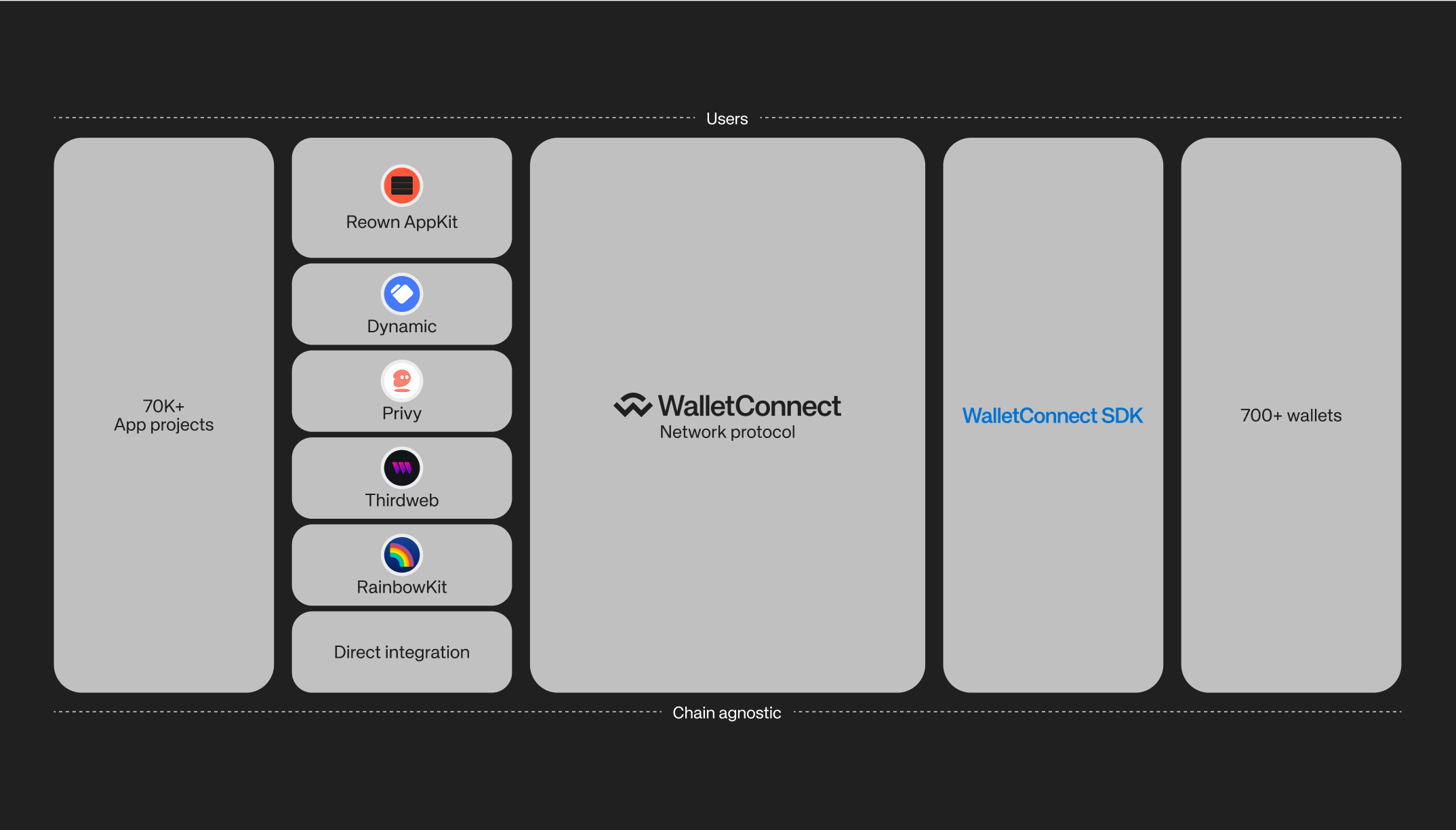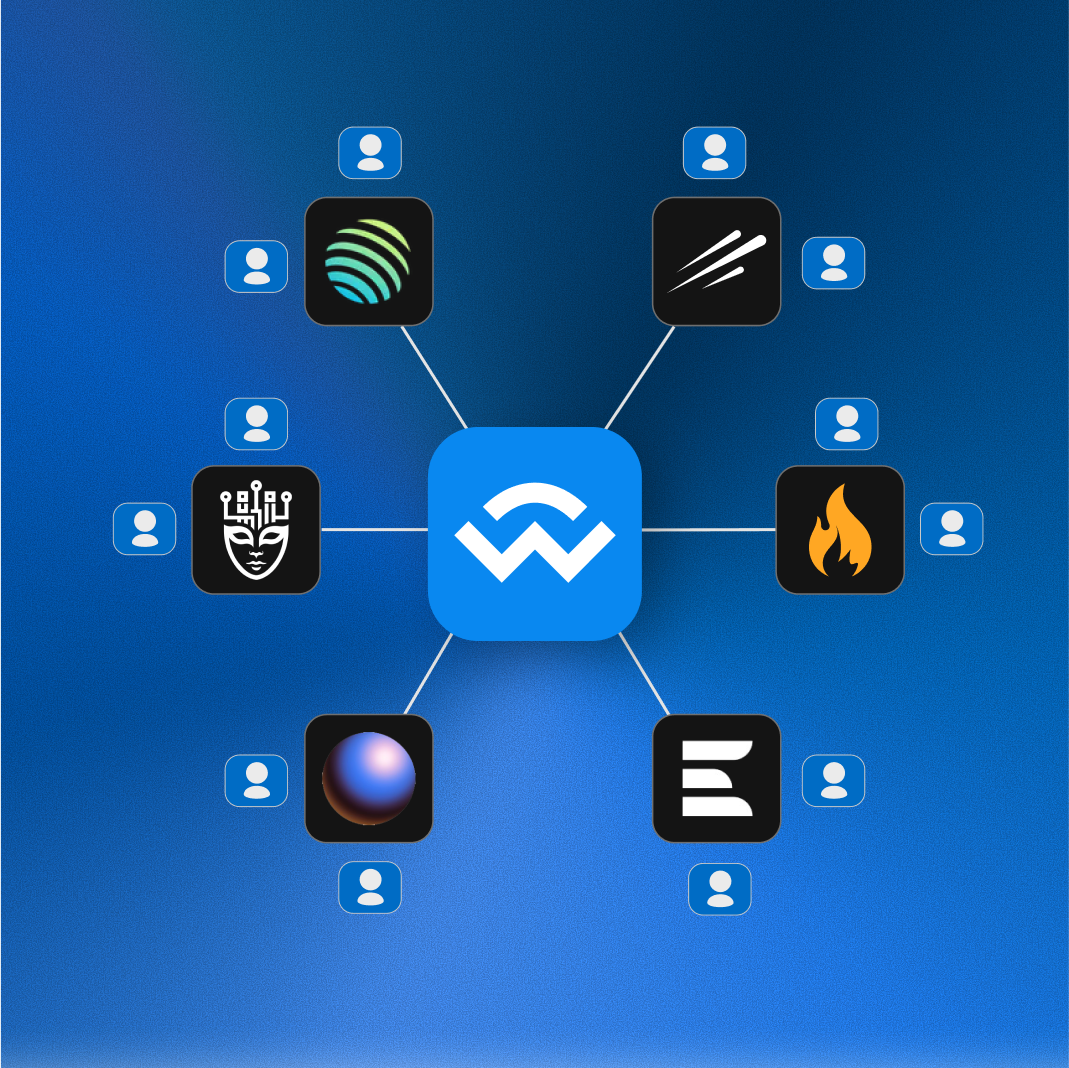PARTNERS
Built into the largest onchain apps
From DeFi to payments to gaming, identity, and beyond. WalletConnect powers secure onchain connections across 80,000+ apps.
Most applications choose to onboard to the network via an SDK partner who makes the integration easy. See below for a list of our registered partners









Understanding the WalletConnect Network
WalletConnect is an open-source protocol that securely connects wallets to apps. By standardizing wallet-to-app communication, it enables millions to safely and easily engage with onchain applications.

Reown
The official gateway to the WalletConnect Network. Integrating gives your app access to 500+ wallets and seamless multichain UX that just works.
ConnectKit By Family
ConnectKit is a powerful React component library for connecting a wallet to your dApp. It supports the most popular connectors and chains, and provides a beautiful, seamless experience.

Dynamic
Dynamic combines authentication, smart wallets, and secure key management into one flexible SDK. Get the most multi-chain coverage across chains and third-party wallets.

Mesh
Mesh securely connects hundreds of exchanges, wallets, and payment service providers to enable seamless digital asset payments and conversions.
Privy
Privy makes it easy to build on crypto rails. Securely spin up whitelabel wallets, sign transactions, and integrate onchain infrastructure—all through one simple API.

Thirdweb
Onboard every user, connect to any crypto wallet, and enable social login — with in-app wallets, account abstraction, and fiat & crypto payments.

RainbowKit By Rainbow
Make your Ethereum login experience feel right at home on your website. RainbowKit allows you to fully customize color, border radius, wallet providers and a lot more — all through an easy-to-use API.
Different SDKs are designed for different needs. The best fit depends on what you're building and who you're building for. Here are a few things to consider:
- Chains: Does the SDK support the networks your app runs on?
- Wallet support: Do you need embedded wallets, external wallet connections, or both?
- Features: Are onramps, swaps, or payments part of your flow?
- Platform: Are you building for mobile, web, or both?
- Data: Will you need usage insights or analytics?
- Scale and support: Do you want full control or a managed experience
Take a moment to map your app’s goals, and you’ll know what to prioritize.
Some SDKs are free and open source. Others offer paid plans with additional features, hosted infra, or support.
Most SDKs take minutes to get started.
Support varies. Some SDKs focus on EVM only, while others support Solana, Bitcoin, and more.
Yes. All of these SDKs connect to the WalletConnect Network in some way. They help your app talk to 700+ wallets and 70,000+ other apps. Some SDKs offer WalletConnect as a built-in layer, while others require you to configure it manually.


